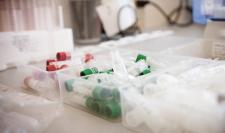Sperm Is a Focus of Start-Ups Looking to Boost Fertility
By Fiorella Valdesolo,
WSJ Magazine
| 06. 08. 2022
“Where is the we?” It’s the question that was the driving force for Vida Delrahim and Ronit Menashe when they created WeNatal, a new brand of prenatal supplements that aims to be more inclusive. In the process of trying to conceive, couples often use the word we. We’re trying to get pregnant. We’re having trouble conceiving. We’re having a baby. But, as Delrahim and Menashe realized after their own individual struggles to conceive, despite all the we, much of the burden of fertility optimization continues to fall on women. It’s an imbalance that WeNatal and a number of other start-ups are starting to address.
In the quest for high-quality embryos and viable pregnancies, sperm is critical, says Toronto-based reproductive endocrinologist Dan Nayot, who is chief medical advisor for fertility supplement company Bird&Be. And good sperm is about both quality and quantity. In a routine semen analysis, Nayot generally looks at the volume of semen (a combination of seminal fluid and sperm); sperm concentration (how many millions of sperm per millimeter); sperm motility (how many are actually moving...
Related Articles
By Aisha Down, The Guardian | 11.10.2025
It has been an excellent year for neurotech, if you ignore the people funding it. In August, a tiny brain implant successfully decoded the inner speech of paralysis patients. In October, an eye implant restored sight to patients who had...
By Jessica Hamzelou, MIT Technology Review | 11.07.2025
This week, we heard that Tom Brady had his dog cloned. The former quarterback revealed that his Junie is actually a clone of Lua, a pit bull mix that died in 2023.
Brady’s announcement follows those of celebrities like Paris...
By Heidi Ledford, Nature | 10.31.2025
Late last year, dozens of researchers spanning thousands of miles banded together in a race to save one baby boy’s life. The result was a world first: a cutting-edge gene-editing therapy fashioned for a single person, and produced in...
By Lauran Neergaard, AP News | 11.03.2025
WASHINGTON (AP) — The first clinical trial is getting underway to see if transplanting pig kidneys into people might really save lives.
United Therapeutics, a producer of gene-edited pig kidneys, announced Monday that the study’s initial transplant was performed successfully...




